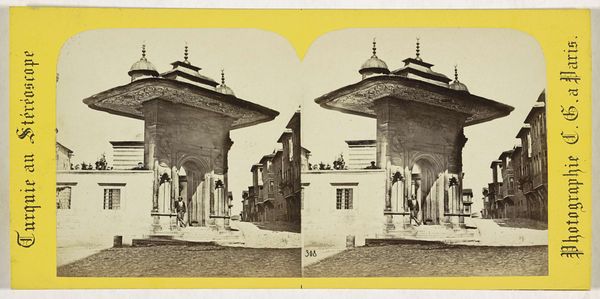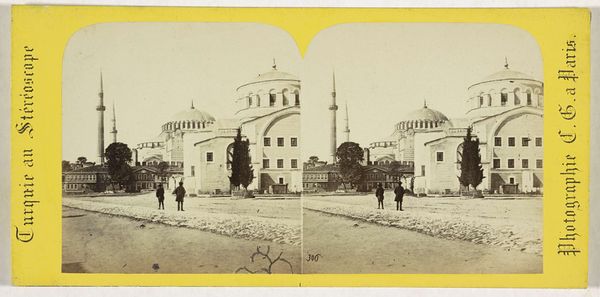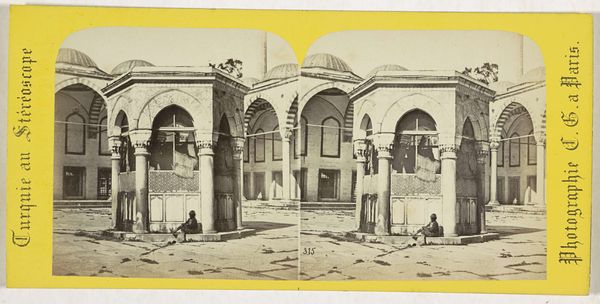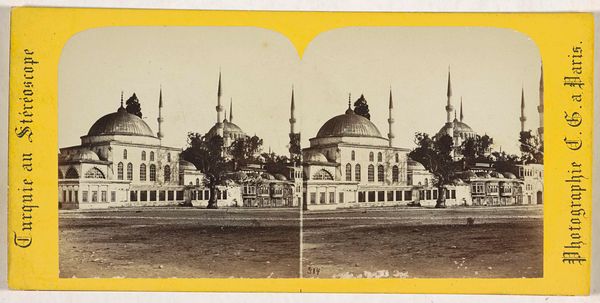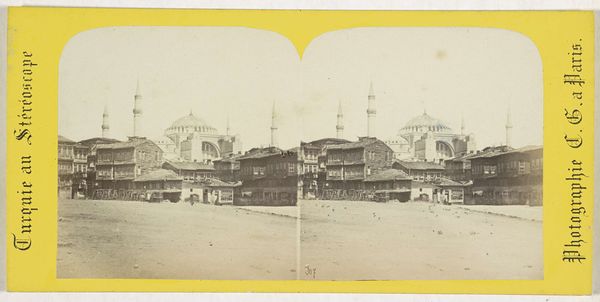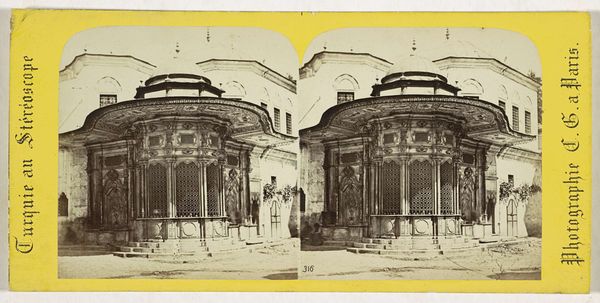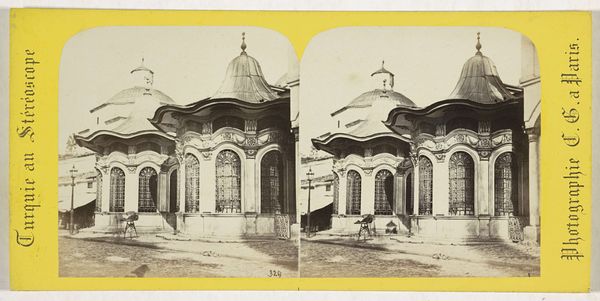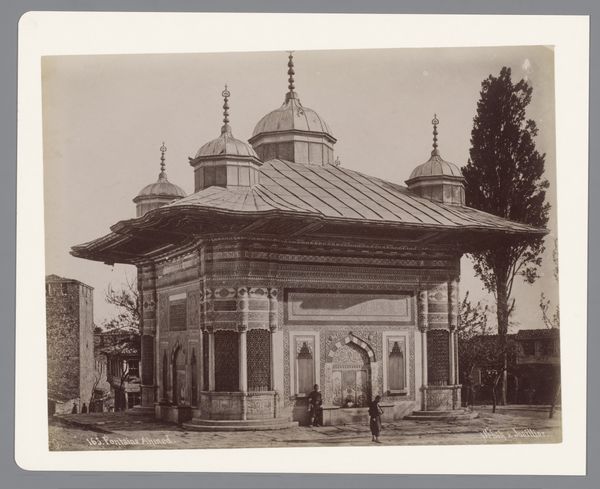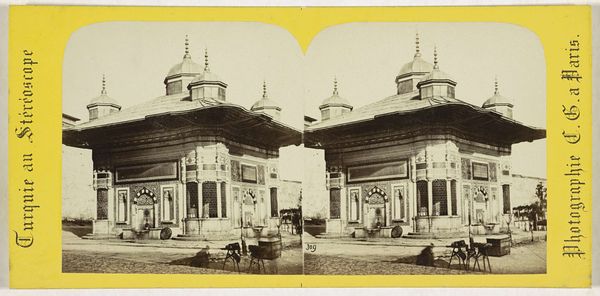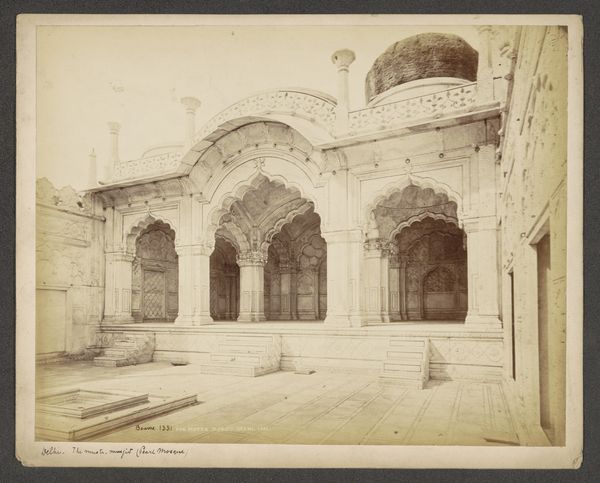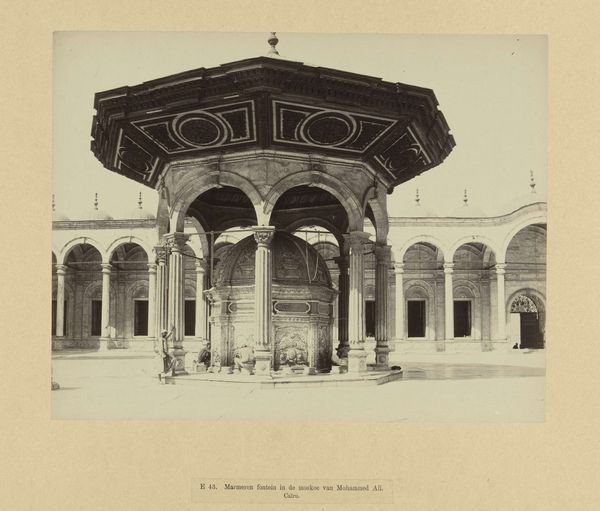
Graftombe van Emetullah Râbi'a Gülnûş Sultan in de Yeni Valide moskee in Üsküdar 1861 - 1870
0:00
0:00
photography, architecture
#
photography
#
coloured pencil
#
cityscape
#
islamic-art
#
architecture
Dimensions: height 84 mm, width 174 mm
Copyright: Rijks Museum: Open Domain
Editor: This photograph, taken by Charles Gaudin sometime between 1861 and 1870, depicts the tomb of Emetullah Râbi'a Gülnûş Sultan within the Yeni Valide mosque in Üsküdar. There’s almost a surreal quality to it, seeing it presented in a stereoscope format. How do we interpret this in the context of 19th century photography and Ottoman history? Curator: It's crucial to remember how photography impacted the West's perception and construction of the “Orient.” This image, framed as a stereoscopic view for Western consumption, partakes in a tradition of exoticising the East. Note how the composition highlights the architectural grandeur of the tomb – almost to create a sense of Ottoman power – whilst at the same time situating a local figure at the fountain to reinforce the "everyday" orientalism. Do you notice how that tension between grandeur and commonplace impacts its message? Editor: I do. It's as if it’s meant to both impress and domesticate the image of the Ottoman Empire. But doesn't presenting it as a stereoscope also change things? Curator: Precisely. The stereoscope brought the world into people's homes. By turning the cultural and religious space of the Sultan's tomb into a “domestic” viewing experience, the photographer flattens a very complex relationship with Ottoman history, essentially turning cultural heritage into entertainment for profit. What do you think is missed from the image by this flattening? Editor: Nuance. By simplifying and recontextualizing the image, a deeper, more personal understanding gets lost in translation. Curator: Precisely. Understanding that this is both a document and a constructed perspective helps deconstruct the power dynamics embedded within the image. It invites a richer dialogue.
Comments
No comments
Be the first to comment and join the conversation on the ultimate creative platform.
